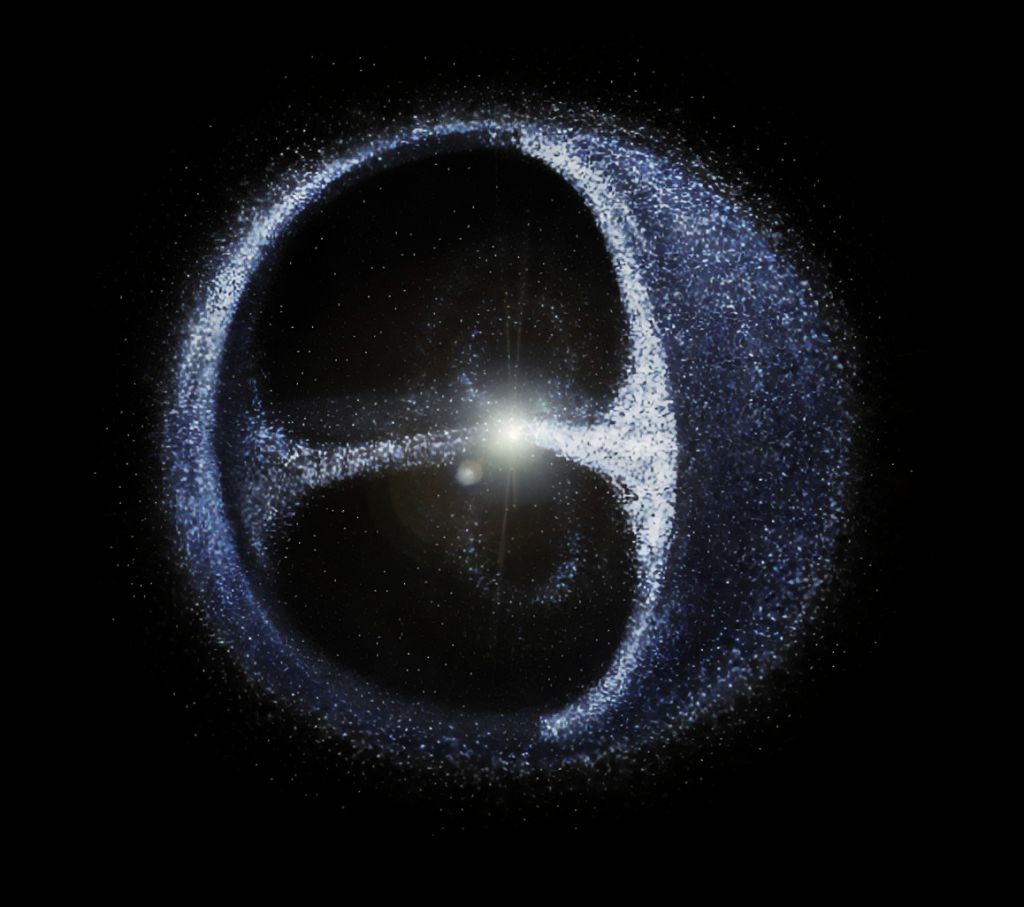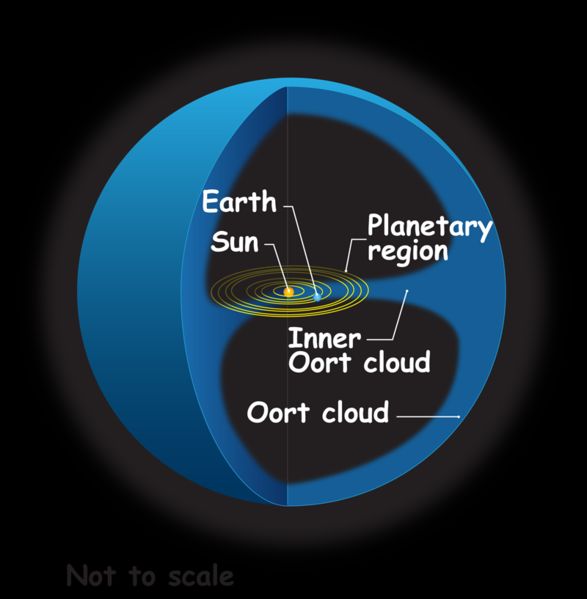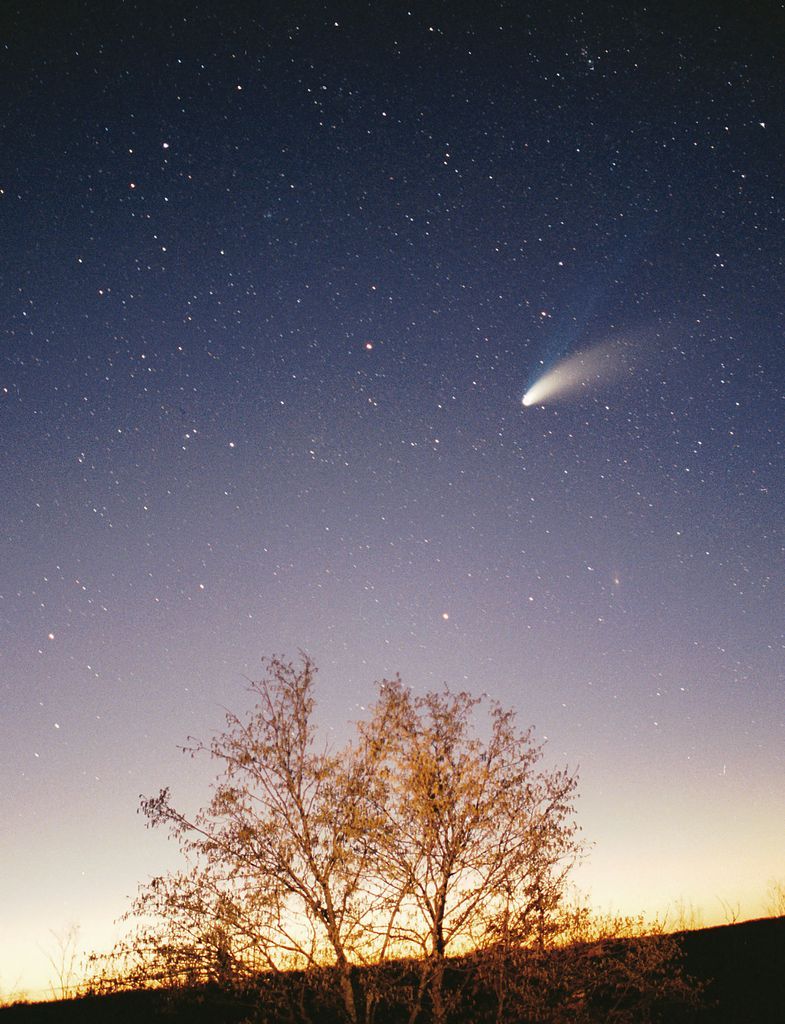
16 November 2022
Far, far away at the edge of our solar system there’s a spherical cloud of icy objects with an inner cloud like a bicycle spoke reaching toward the Sun. No one’s ever seen it. It’s the home of comets.
The Oort cloud is the theoretical concept of a cloud of predominantly icy planetesimals proposed to surround the Sun at distances ranging from 2,000 to 200,000 AU (0.03 to 3.2 light-years). It is divided into two regions: a disc-shaped inner Oort cloud (or Hills cloud) and a spherical outer Oort cloud.
— Wikipedia: Oort cloud
The Hills cloud, or inner Oort cloud, contains roughly 5 times as many comets as the outer ring.

Long-period comets (which take more than 200 years to orbit the Sun) probably come from the Oort Cloud, which is sometimes described as a “cometary reservoir.””
— NASA: Oort Cloud overview
It’s the home of Comet Hale-Bopp which appeared in 1997 and will return to the inner Solar System around the year 4385.

Hale-Bopp is out there with the planetesimals, minute planets believed to be composed of cosmic dust grains that accumulated with many others under gravitation to form a planet.
(photos and illustrations from Wikimedia Commons; click on the captions to see the originals)
p.s. an AU is an Astronomical Unit = the distance from Earth to Sun in one Julian year (365.25 days).